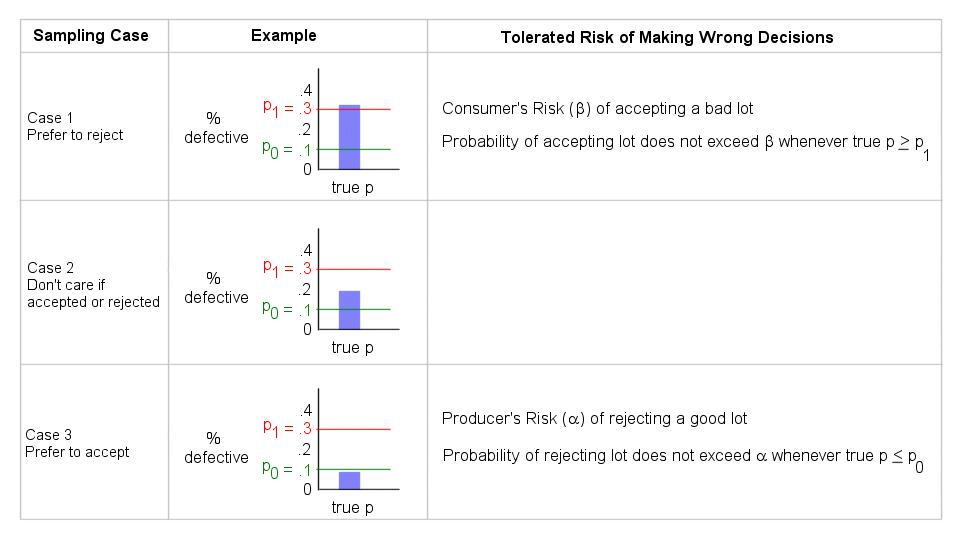
Calculator input parameters are as follows:


This tool provides the ability to plan a sequential lot acceptance test where each unit is classified into one of two categories, good or defective. It is based on the work of Abraham Wald (Ref. 2). The following shows the possible sampling outcomes and the preferences for test decision outcome. "true p" in the example column below is the true proportion defective in the lot if all units were to be inspected.
See reference 2, Chapter 5, "Testing the Mean of a Binomial Distribution (Acceptance Inspection of a Lot Where Each Unit is Classified Into One of Two Categories)" for additional details.

Calculator input parameters are as follows:
Tip: To experiment with the test methodology select "simulation" in the chart overlay pull down and vary input parameters (1-4) along with "true p" (input 5C).